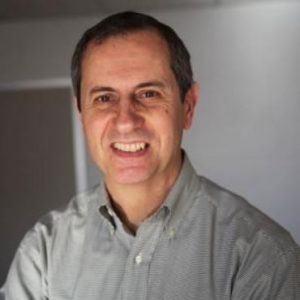Walter Besio, University of Rhode Island professor and electrical, computer, and biomedical engineer, has invented and patented an electrode that helps him “read minds.
Besio, an expert in neural engineering, rehabilitation engineering, and physiological control, created his cutting edge Tripolar Concentric Ring Electrode (TCRE) based electroencephalography (EEG) sensor, which is able to detect otherwise impalpable brain signals.

“The electrode allows me to see things that others haven’t been able to see before,” Besio said.
CREmedical, Cesio’s company, not only makes devices that can enable a much better diagnosis of epilepsy and other related diseases, but it also has been working to invent therapeutic tools and methods that will control seizures by administering electrical stimuli to precise locations in the brain.
For decades, the medical science community has struggled with diagnosis and treatment methods for epilepsy, seizures and neurodegenerative diseases like Alzheimer’s, Parkinson’s, Huntington’s, depression and traumatic brain injuries. Besio’s optimism abounds as he explains recent findings of lab studies done on rats using his therapeutic methods for such diseases.
Though his research, Besio has been able to increase the lowered levels of GABA, an inhibitory chemical of the brain, and lower high levels of Glutamate, an excitatory chemical of the brain. This, he says, is an important step towards the development of more robust treatments of the aforementioned diseases. Very recently, his methods have shown promise in larger animal epileptic brain models, which is an important step towards clinical trials and finally making the therapeutic methods available for use. Currently, the TCRE based sensors are being used in research studies across North America and are on their way to be tested in Europe.
Besio’s primary inspiration behind working in the biomedical field was to help his brother regain mobility after becoming paralyzed in a car accident.
“My goal is to help alleviate pain, disability, disease and suffering in society,” Besio said.
Besio is also one of the very few Native American scientists in this field and he greatly values diversity in his research team.
By accounts of his students, Besio has been a great mentor and a source of motivation. One of his students, Rachel, a junior studying biomedical engineering at URI, had the opportunity to travel to Orlando, Florida to participate and help present a demo of the sensors in a related international conference. She aims to work in the biomedical industry and is excited about the opportunities and experience she would gain by working at Besio’s Neuro Rehabilitation lab.
Another student, Scott Selig, who is also a junior studying biomedical engineering with a dual German major, began working as hardware and electronics intern at CREmedical when he was only a sophomore. His drive and personal motivation to work in the field of neurodegenerative diseases has been his father’s affliction with Parkinson’s. He is determined to enable the access of cutting edge and innovative diagnostic and therapeutic technologies to people suffering with diseases. He finds that his major and internship complement each other and help him actively apply his theoretical knowledge.
“It’s a big step for me to be working on such an innovative technology company and helps me know the kinks in technology,” Selig said.
Besio is keen to see students at URI take up prospects of entrepreneurship and furthering technology at their opportune age. He believes that incorporating business and engineering as integral elements of the Capstone projects can help strengthen the confidence of students in exploring possibilities of entrepreneurship.
“Go beyond what’s expected,” Besio said. “Don’t just do what everybody else is doing or you will be stuck in mediocrity.”

